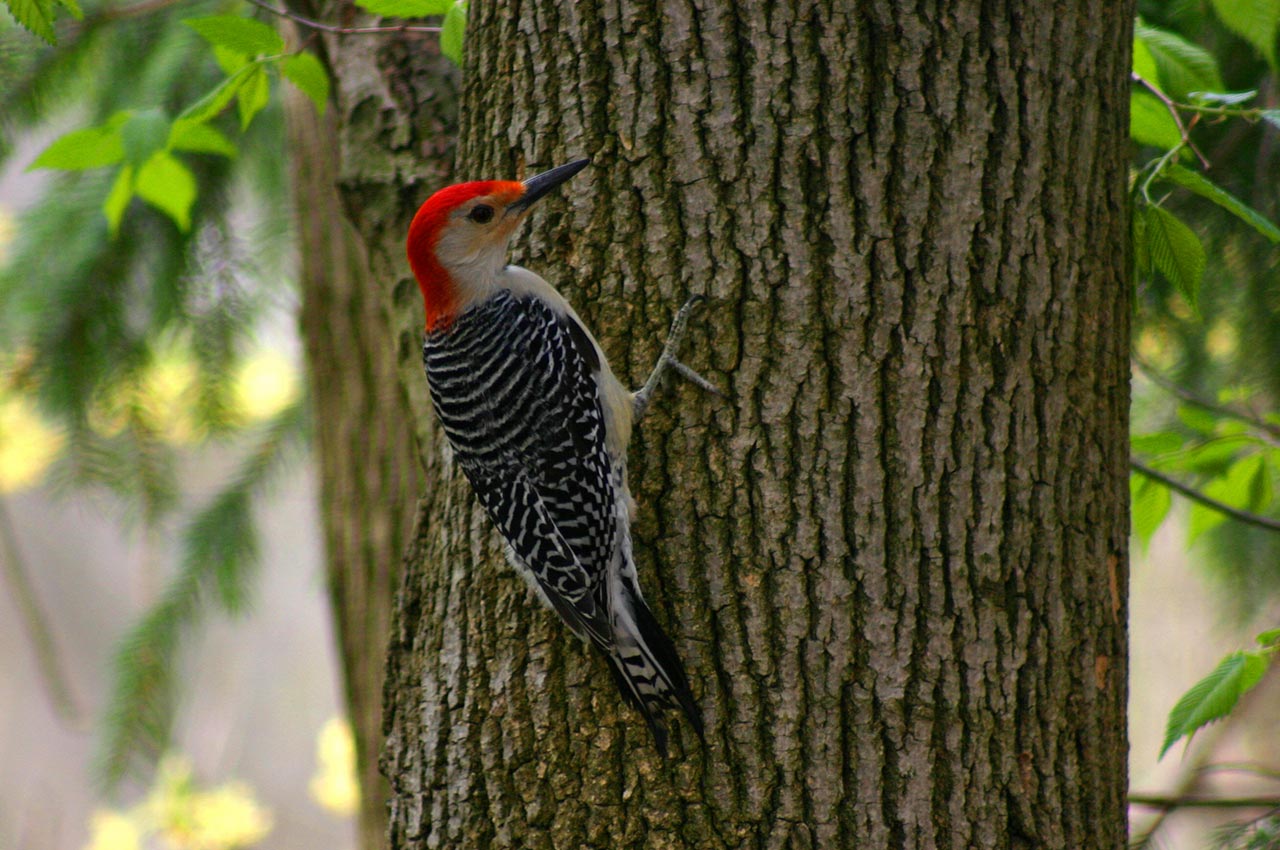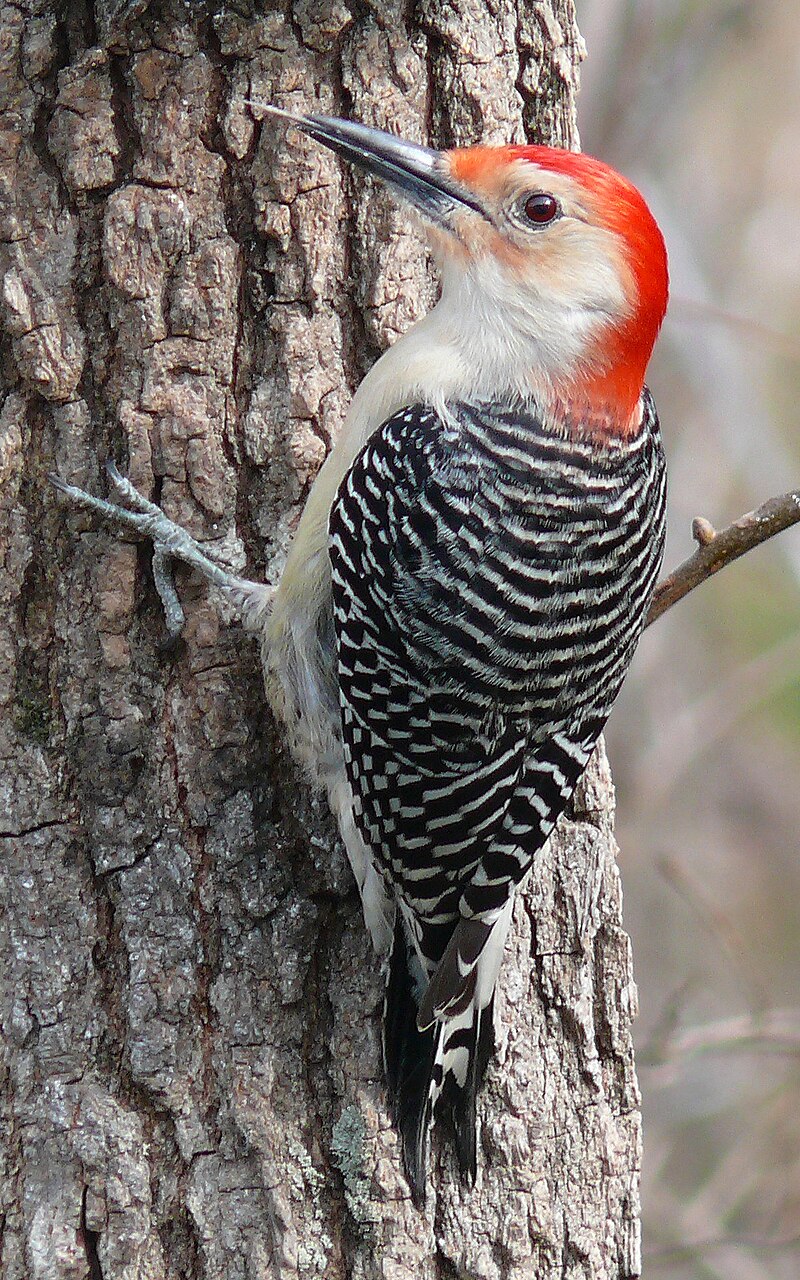Woodpeckers in Florida Population: Species Overview and Conservation
Woodpeckers in Florida Population: Species Overview and Conservation
Blog Article
Discover the Interesting World of Woodpeckers: Whatever You Need to Know
The world of woodpeckers is a world loaded with distinct habits, detailed adaptations, and a varied selection of types. From their environments and circulation patterns to their feeding practices and specialized physiological features, woodpeckers have actually long astounded the interest of ornithologists and nature lovers alike.
Woodpecker Habitats and Distribution
In North America, for example, woodpeckers can be spotted in both coniferous and deciduous woodlands, using their strong beaks to forage for insects and develop nesting cavities in trees. In Africa, certain woodpecker varieties have actually adapted to dry atmospheres, such as the acacia woodlands, where they play a crucial role in regulating insect populaces.

Feeding Behaviors and Diet Plan
Amongst the numerous facets of their actions, woodpeckers show distinctive feeding behaviors and nutritional choices. These birds are largely insectivores, with a diet plan that includes ants, beetles, caterpillars, and various other pests located in trees. Woodpeckers utilize their solid beaks to pierce right into the bark of trees, penetrating for pests and larvae concealed underneath the surface. Along with bugs, woodpeckers likewise consume nuts, seeds, fruits, and sap. Some species have actually specialized tongues with barbed pointers that aid them draw out insects from crevices in timber.
Woodpeckers are recognized for their drumming actions, which serves not just to interact with other woodpeckers but additionally to find food. The rapid drumming sound is produced by the bird pecking on resonant surface areas like dead trees or steel poles. This behavior can bring in bugs concealed in the timber, enabling the woodpecker to spot their visibility and prey on them.
Unique Adjustments for Tree Climbing
In their proficient quest of pests concealed within tree bark, woodpeckers have evolved exceptional anatomical features that furnish them with distinct adjustments for effective tree climbing. Among the vital adjustments is their zygodactyl feet, with two toes aiming ahead and 2 directing in reverse, offering a solid hold on tree trunks. This specific foot arrangement permits woodpeckers to cling to upright surfaces effortlessly, enabling them to move up and down trees with agility. Additionally, woodpeckers have rigid tail plumes that function as a supportive prop while they climb up, aiding in balance and security. my website Their strong, chisel-like beaks are not only made use of for drilling into timber but likewise for gripping onto bark as they ascend tree trunks. Woodpeckers have strong neck muscle mass and an one-of-a-kind skull structure that take in the impact of continuous pecking, permitting them to climb up vertically without causing damage to their minds. These adjustments display the amazing transformative layout that makes it possible for woodpeckers to navigate trees with precision and effectiveness.
Diverse Woodpecker Species Worldwide
With over 200 different types spread across various environments worldwide, the family members of Picidae incorporates a remarkable diversity of woodpeckers. These birds can be found in forests, woodlands, savannas, and even metropolitan areas, showcasing their adaptability to different environments. From the iconic Northern Flicker in The United States And copyright to the vivid and evasive Crimson-backed Flameback in Asia, each woodpecker types exhibits unique characteristics in regards to tuft, habits, and habitat choice.
Woodpeckers differ significantly in size, with the petite Downy Woodpecker determining around 6-7 inches in length, while the effective Lineated Woodpecker can rise to 17 inches - Woodpeckers in Florida. Their beaks likewise come in various sizes and shapes, reflecting their feeding behaviors. Some types specialize in removing bugs from tree bark, like the Acorn Woodpecker, while others, such as the Black-cheeked Woodpecker, feed on fruits and seeds

Conservation Efforts and Difficulties
Conservation campaigns for woodpecker populaces are critical in reducing the impact of habitat loss and other dangers encountering these varied bird varieties. Woodpeckers encounter various difficulties to their survival, primarily due to deforestation, urbanization, climate change, and invasive varieties. To deal with these concerns, preservation initiatives concentrate on securing and recovering woodpecker environments, carrying out lasting forestry methods, and increasing understanding regarding the significance of these birds in environments.
One considerable difficulty in woodpecker conservation is the fragmentation of their habitats, leading to separated populations that are much more susceptible to why not check here extinction - Woodpeckers in Florida. Conservationists function to develop wildlife passages and protected locations that attach these fragmented habitats, allowing woodpeckers to relocate in between different locations for feeding, reproducing, and shelter

Conclusion
Finally, woodpeckers are remarkable birds with one-of-a-kind adjustments for tree climbing and feeding behaviors. They can be found in diverse habitats worldwide, facing conservation challenges because of habitat loss and human activities. Understanding their habitats, diet plans, and best site habits is important for preservation efforts to secure these crucial bird types. Additional research study and conservation actions are needed to ensure the survival of woodpeckers in the wild.
Report this page